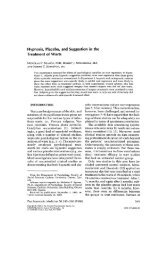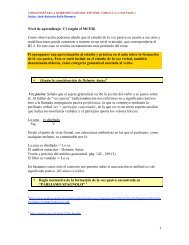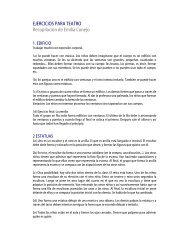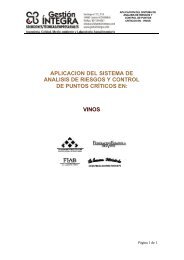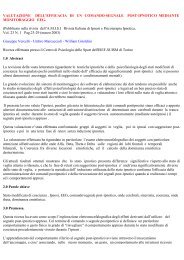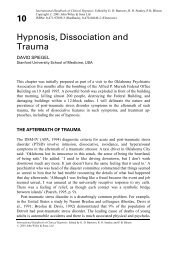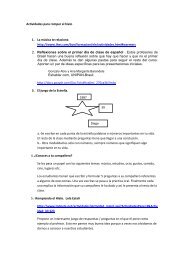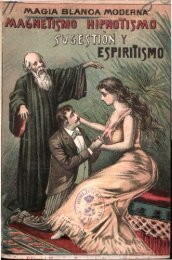Hypnosis and the Law: Examining the Stereotypes
Hypnosis and the Law: Examining the Stereotypes
Hypnosis and the Law: Examining the Stereotypes
You also want an ePaper? Increase the reach of your titles
YUMPU automatically turns print PDFs into web optimized ePapers that Google loves.
1284 CRIMINAL JUSTICE AND BEHAVIOR<br />
Never<strong>the</strong>less, it should also be emphasized that even if hypnotic automatism is excluded<br />
as a key variable in legal cases where <strong>the</strong> abuse of hypnosis is alleged, this should not stop<br />
us from examining alternative causes. As noted earlier, an unscrupulous hypnotist (such as<br />
an unscrupulous doctor or counselor) can use a variety of factors to induce submission,<br />
including trust, rapport, relaxation, fear of embarrassment, ambiguity, <strong>and</strong> physical manipulation.<br />
In English law, a distinction is made between <strong>the</strong> concept of “compulsion” or<br />
“duress”—as when, for instance, an action was performed under threat, in obedience to<br />
orders, under marital coercion, or to avert a greater evil—<strong>and</strong> “automatism”—as when, for<br />
instance, an action was performed without awareness or as <strong>the</strong> result of a spasm (Curzon,<br />
1980). Given <strong>the</strong> evidence, it would perhaps make more sense in such cases for investigators<br />
to pay attention more to <strong>the</strong> elements of <strong>the</strong> hypnotic situation that might be relevant<br />
to <strong>the</strong> concept of compulsion or duress ra<strong>the</strong>r than automatism.<br />
HYPNOSIS, TRUTH TELLING, AND FAKING<br />
Given <strong>the</strong> broad agreement that hypnotized individuals do not lose control of <strong>the</strong>ir<br />
behavior, it is not surprising that <strong>the</strong> issue of whe<strong>the</strong>r a person can lie under hypnosis seems<br />
to have been settled for some time now. The general opinion among researchers is that participants<br />
are capable of lying when hypnotized (see, for example, American Medical<br />
Association, 1986; Anderton, 1986; Orne, 1971; Orne, Soskis, Dinges, & Orne, 1984; Reiser,<br />
1980; Udolf, 1983). In an experimental investigation of this issue, Sheehan <strong>and</strong> Statham<br />
(1988) suggested that highly hypnotizable participants may find it more difficult to lie<br />
under hypnosis because, having developed a rapport with <strong>the</strong> hypnotist, <strong>the</strong>y may subsequently<br />
find that deceiving <strong>the</strong> hypnotist creates conflict. However, this interpretation was<br />
based on <strong>the</strong> response of a single participant; moreover, it suggests that it is not <strong>the</strong> induction<br />
of hypnosis, per se, that is responsible for any difficulty in lying but <strong>the</strong> social relationship<br />
established between <strong>the</strong> hypnotist <strong>and</strong> <strong>the</strong> participant. In a fur<strong>the</strong>r study, in which<br />
group induction of hypnosis was used (i.e., rapport was minimized), Sheehan <strong>and</strong> Statham<br />
found that participants of high hypnotizability (i.e., those who had had a firsth<strong>and</strong> experience<br />
of hypnosis) were no more likely than low hypnotizables (who had not experienced<br />
hypnosis) to endorse <strong>the</strong> opinion that lying is possible under hypnosis.<br />
In regard to faking hypnosis itself, <strong>the</strong>re are indications that statistically, at a group level,<br />
participants instructed to simulate hypnosis can be detected because <strong>the</strong>y tend to show<br />
exaggerated behavior <strong>and</strong> respond like very highly hypnotically susceptible participants<br />
(Martin & Lynn, 1996; Wagstaff, 1981, 2004). For example, Martin <strong>and</strong> Lynn (1996)<br />
devised a Hypnotic Simulation Index, which measures <strong>the</strong> extent to which participants<br />
report extreme experiences (including simply how “deeply hypnotized” <strong>the</strong>y were). They<br />
showed that a 10-item version of <strong>the</strong> Hypnotic Simulation Index successfully discriminated<br />
reals from simulators (low hypnotizables instructed to simulate an “excellent” hypnotic participant)<br />
for 96% of <strong>the</strong> sample. The simulators tended to report more extreme experiences.<br />
Significantly, however, a st<strong>and</strong>ard hypnotic susceptibility test also successfully classified<br />
76% of <strong>the</strong> sample. Such results fit well with <strong>the</strong> view put forward by Wagstaff (1991,<br />
2004) <strong>and</strong> Spanos (1992) that participants who provide extreme scores on hypnotic susceptibility<br />
measures (hypnotic “virtuosos”) are those most likely to be complying or exaggerating<br />
<strong>the</strong>ir responses. However, an alternative view is that those simulating <strong>the</strong> role of an<br />
Downloaded from<br />
http://cjb.sagepub.com at SAGE Publications on October 31, 2008




